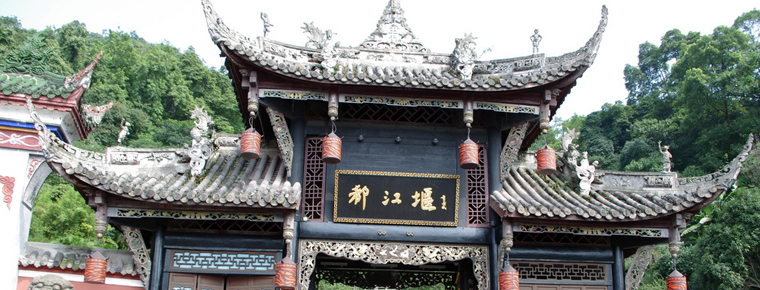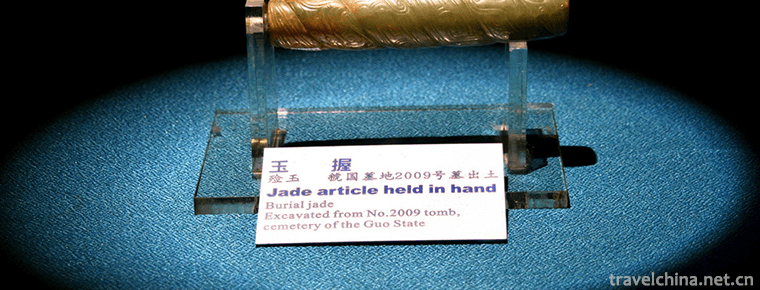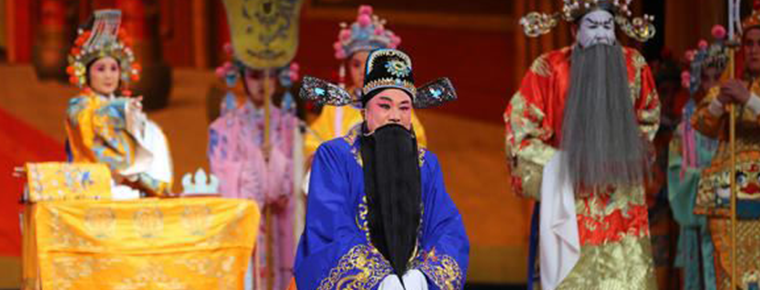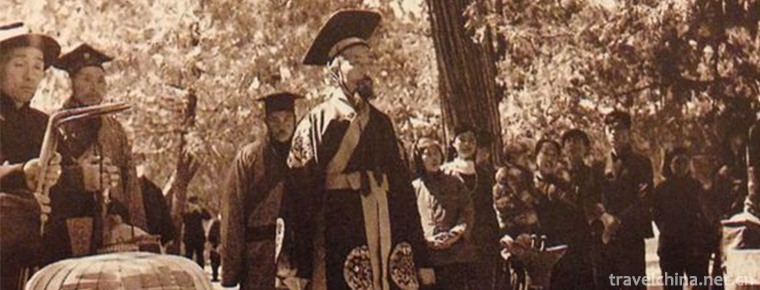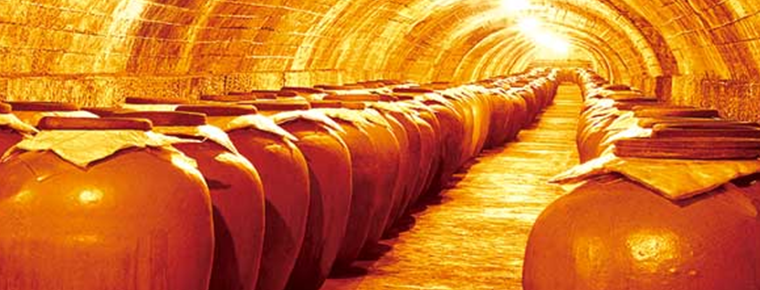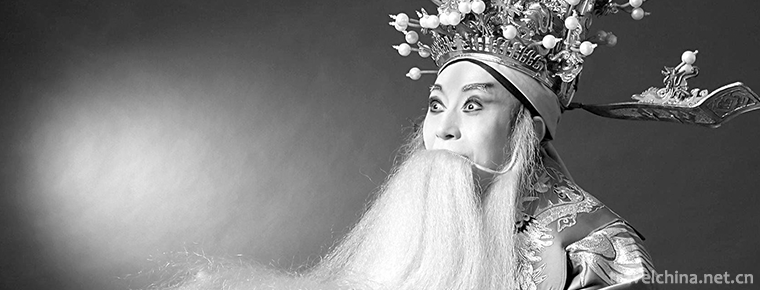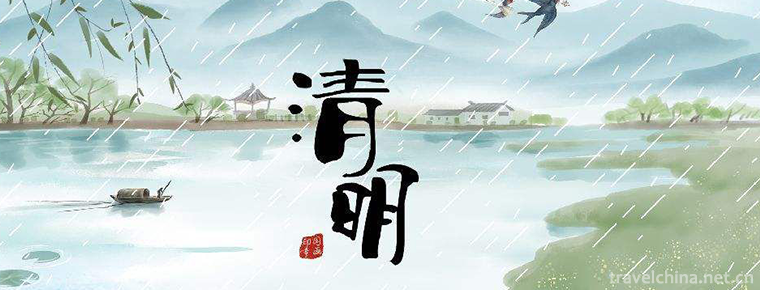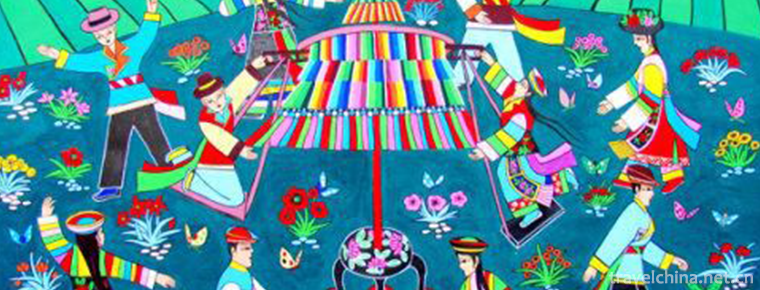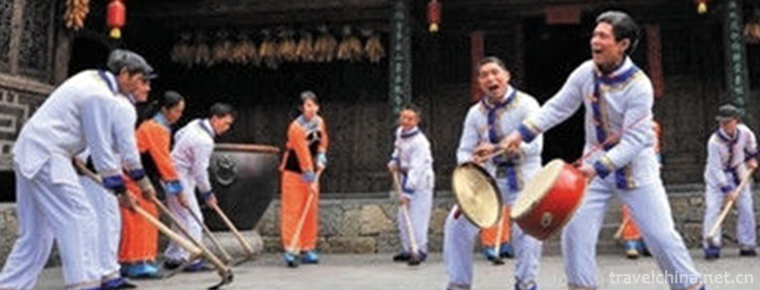Pipa Art
Pipa Art
In the history of modern Chinese traditional folk music, there are two schools of pipa: the "Shanghai School" (Pudong School) and the "Zhejiang School" (Pinghu School). The Pipa art of Pinghu School is of considerable historical value to the study of the history of national music. Pipa art is one of the second batch of national intangible cultural traditional music.
On June 7, 2008, Pipa Art was approved by the State Council and listed in the second batch of national intangible cultural heritage list.
historical origin
Records of Pipa first appeared 2000 years ago. For example, Liu Xi, a scholar in the Eastern Han Dynasty (25-220 B.C.), wrote in his book Shi Ming: "Loquat is called loquat before pushing hands, but loquat is called loquat at the beginning, just like when it is drumming, so it is named". But the shape of Pipa is different from today's. Its shape is straight neck, circular speaker, and the number of phonemes and chords is not fixed. The number of strings varies from four to five or six. This kind of Pipa was then called "Qin Pipa" or "Qin Han Zi". In fact, it is the predecessor of Ruan in today's national musical instrument. Its name comes from Ruan Xian, one of the seven virtuous bamboo groves in Jin Dynasty. Ruan Xian is famous for playing this pipa. Later generations called this instrument "Ruan Xian", short for Ruan Xian. The name of Pipa was given to the later pipa.
In the fifth and sixth centuries, with the strengthening of commercial and cultural exchanges between China and the Western Regions, a Pipa with musical items was introduced from Central Asia. Its shape was curved neck, pear-shaped speaker, with four columns and four strings, much like Oud or Ud or Barbat in ancient Persia, which is common in Arab countries today. The Pipa is played with a pluck. This kind of Pipa was called "Hupipa" at that time, and a number of excellent performers appeared, which made this kind of Pipa very popular at that time, even the royal family began to be keen on listening to "Huyue". Later, people combined Hupipa to transform and develop the original "Qinpipa" and formed the Tang Dynasty Pipa which is still preserved today. Since then, it has been further reformed to make it more suitable for Chinese tastes from timbre to shape. Modern Pipa evolved from this kind of Tang Pipa.
By the late Tang Dynasty, the pipa had been greatly developed from playing techniques to making structure. The most prominent reform in performance techniques is from cross-hugging performance to vertical-hugging performance, replacing direct finger playing with poker playing. The most obvious change in the structure of Pipa was from four phonemes to sixteen (i.e. four phases and twelve pins). At the same time, its neck is widened, and the lower resonance box is narrowed from width to facilitate the left hand to press the lower phoneme. As a result of these two reforms, Pipa performance techniques have been unprecedented development. According to statistics, there are fifty or sixty kinds of Pipa. To sum up, the right finger method has two systems: one is the wheel finger system, the other is the spring-pick system. The left finger method can also be divided into two systems: one is finger-pressing system, the other is push-pull system.
By the fifteenth century, Pipa had a number of martial arts songs represented by "Ambush on Ten Sides" and "Overlord Unloading Armor", as well as literary songs represented by "Moon Ergao", "Sichun" and "Zhaojun complaint". The so-called Wuqu is characterized by realism and the use of right-handed techniques, while the so-called Wenqu is characterized by lyricism and the use of left-handed techniques. These music has become the treasure of Chinese music and the treasure of Pipa art.
By the time of the Republic of China, the number of pipas had been increased according to the twelve-average law. The standard Pipa has eight-phase and thirty pieces. Its expressiveness and adaptability have been greatly strengthened. It can not only play traditional music, but also western and modern works, and is conducive to cooperation with Symphony orchestras. It created conditions for further development. By the middle and late twentieth century, the art of Pipa had a new development. In the production of pipa, the original silk strings were changed into nylon wire strings, and some even adopted silver strings, which increased the volume and resonance of the pipa. The use of left thumb and chord in technique has greatly improved the expressive force of Pipa again. As a result, a large number of excellent solo works have emerged, which integrate traditional music and modern composing theory, as well as Pipa concertos with various instruments, small bands and Symphony orchestras. By the 21st century, Pipa not only showed the scene of restoring the prosperous Tang Dynasty in China, but also attracted more and more attention from music lovers all over the world. Many traditional music and contemporary works are loved by Chinese and foreign audiences.
Pinghu City has a long history and profound traditional culture. In the long years, the people of Pinghu have created a rich and precious cultural heritage. During the three years from 2004 to 2006, under the correct leadership of the Municipal Bureau of Culture, Radio, Television, Press and Publication, a census of ethnic and folk resources was carried out in the whole city. Through the joint efforts of cultural workers and people from all walks of life, more than 7000 pieces of information were collected and more than 600 items were set up in the non-remains census. Biwa, cymbal books of Pinghu School, and books of Pinghu have been listed in the national directory. 。 These intangible cultural heritages contain the unique spiritual wealth of the people of Pinghu, and reflect the creativity of the people of Pinghu, who are diligent, intelligent and strong vitality.
artistic characteristics
The performance characteristics of the Pipa art of Pinghu School are mainly embodied in the technique of the right hand wheel finger. Wheel finger is one of the most basic and characteristic techniques in Pipa performance. Five fingers are as perfect and traceless as a wheel according to the duration of the notes, and move continuously and regularly according to a certain trajectory (the whole wheel). There are two kinds of wheel finger: upper and lower. The last wheel is the food, middle and ring fingers bouncing down in turn, and then the big fingers jumping up. The Pipa of Pinghu School basically uses the next wheel and the upper wheel. For example, the finger in Man Jun Directive requires the upper wheel. The artistic effects of the two methods are similar, but the subtle differences exist objectively. The former is gentle and round, while the latter is clean, round, lively and compact.
In addition, Pinghu Pipa also has some special techniques such as "butterfly flying", "wiping sweep", "seven exercises", "horseshoe wheel" and "hanging wheel". Pinghu Pipa Art Style is famous for its magnificent, solid and distant style. It opposes flashiness and pretense, so it makes a mystery. It requires accurately creating artistic conception and expressing the emotions of the characters, so that the audience will be infected and resonate.
Pinghu Pipa School is well-known and one of the four most influential Pipa schools in modern and contemporary Chinese history. In 1895, Li Fangyuan, a native of Pinghu, Zhejiang Province, who inherited the skills of Pipa from four generations, collated and compiled the "Thirteen Sets of New Pipa Music for Great Music", which was regarded as an important symbol of the formation of the Pipa of Pinghu School, and opened up an important art school of the Pipa Garden, the Pinghu School. After decades of training, Pinghu Pipa School has finally become a spectacular flower in the field of national music in China.
The performance of Pinghu School includes both literary and martial arts, which are characterized by delicate techniques and often accompanied by illusory and soothing movements to enhance the effect of aftertones, while martial arts emphasize momentum and take the following turns as the main ones. Pinghu Pipa School has a considerable influence on the formation of various styles of today's Pipa. In the middle of the 20th century, that is, in the 1940s and 1950s, Zhu Ying, a Pinghu native, was recognized as the representative of Pinghu Pipa School. When Zhu Ying was 9 years old, Wu Baijun, an apprentice of Li Fangyuan, learned the technique of Pipa playing, and pioneered the method of playing Pipa by holding his left big finger. He broke through the forbidden zone of not using his small finger in pipa playing and created the technique of inverting the pipa playing.
On June 14, 2008, Pinghu Pipa was included in the second batch of national intangible cultural heritage protection list published by the State Council.
In the late Ming and early Qing dynasties, the Northern Pipa was introduced into Chongming neighborhood. Jia Gongda was a famous Pipa artist from Tongzhou, Bai Zaizhi, a senior disciple of the Northern Pipa School. After Jia Gongda, Fan Zhengkui, who is "strong in sound", Li Liancheng, who is familiar with the method of changing customs and protecting ropes, and Song Chuyu, who is "proficient in music". It was during that period that several generations of famous artists softened the playing style of the North and South Pipa and were influenced by Chongming's local conditions and customs. They developed from inheritance to "originality" and gradually formed the "Yingzhou Ancient Tune".
Yingzhou Ancient School
During the reign of Daoguang and Xianfeng, some Pipa masters such as Wang Dongyang, Lu Mingzhang, Jiangtai and Huang Xiuting appeared on Chongming Island. Through them, new Pipa masters continued to develop, which improved the tunes and techniques of "Yingzhou Ancient Tune" and laid the foundation of their own school.
In the late Qing Dynasty and early Republic of China, Shen Zhaozhou, Fan Ziyun, Liu Tianhua, Xu Lisun, Shi Songbo, Fan Shaoyun and other famous masters appeared. "Yingzhou Ancient Pipa School" has been famous all over the world since then.
In the 1940s, Yang Xudong, Zhou Nianwen and Zhao Zhishan, the inheritors of Yingzhou Ancient Tune in the county, were also called "Three Great Pipa Artists".
In the process of inheritance, the Pipa Opera of "Yingzhou Ancient Tune" has continuously expanded its influence and became famous both at home and abroad.
Pudong School
The main artistic features of Pudong Pipa are: grand momentum of playing martial arts and quiet and delicate performance of literary works. Especially when playing martial arts, we often use big pipa, which pays attention to full bow opening, strong strength, solid and preserves and develops some performance methods with Shanghai style characteristics. The characteristics of fingering are "rolling four strings (accompanied by changes in the number of strings), parallel strings (four, or three, or two), big score (four strings concurrent), sweep, drag, various kinds of clip and sweep, and various recitation methods. According to Mr. Lin Shicheng's previous life, playing Pudong Pipa should first pursue the atmosphere with the same mind as the sea, and pursue the skills of various schools with a broad range of advantages, so as to make it become the pipa art of the "Chinese School".
Representative Works
In the autumn of 1918, Shen Zhaozhou, a teacher of Nanjing Normal University and Pipa master of Yingzhou Ancient Tune, was invited to play "Yingzhou Ancient Tune" for Dr. Sun Yat-sen in Shanghai. Mr. Zhongshan called it "stunt". Shen Zhaozhou was invited by Shanghai Ying Shang Baidai Company to produce three Pipa tunes in Yingzhou Ancient Tune: Han Palace Autumn Moon, Zhaojun complaint and Ten Sides Ambush.
Liu Tianhua, a master of national music, learned from Shenzhaozhou "Yingzhou Ancient Tunes" and brought them to play everywhere. In 1928, he also produced the main music "Feihua Diancui" by Gaoting Records Company, which played an active role in promoting "Yingzhou Ancient Tunes".
In 1923, Shi Songbo, a Pipa master living in Xiao Jihe, Chongming, was invited by Japanese music circles to play "Yingzhou Ancient Tune" in Tokyo, Osaka, Nagoya and Nagasaki, which was very popular. Shanghai Times praised Shi Songbo as "Dr. Pipa".
The early Pipa music of "Yingzhou Ancient Tune" was composed by Gongchi, which was handed down by hand. In 1916, Shen Zhaozhou compiled and published for the first time Yingzhou Ancient Tunes, which included forty-five pieces of music, including 22 slow-boards, 17 fast-boards, five Wenban and one Wuban. It is a representative quintessence of Yingzhou ancient tune.
In 1936, Xu Lisun, a disciple of Shenzhaozhou, added "General Theory", "Initial Etudes" and "Music Chujin" when he reprinted "Yingzhou Ancient Tune" as "Pipa Music of Mei'an".
In 1941, Cao An-he and Yang Yinliu compiled and published the Pipa Score of Wenban Twelve Songs in accordance with twelve pieces of Yingzhou Ancient Tunes imparted by Liu Tianhua.
In 1946, the "Yingzhou Ancient Tune" and "Wenban Twelve Songs" in the Jade Rhyme Collection of Pipa Publications were included in the simplified edition of "Yingzhou Ancient Tune" and "Wenban Twelve Songs".
In 1984, Chen Gongze, Fan Boyan and Yin Rongzhu compiled and published the Ancient Yingzhou Tunes Selected by Fan Shaoyun and Zhao Zhishan, which earned 20 tracks.
"A Collection of Famous Chinese Pipa Music" published in 1997 earned eleven pieces of "Yingzhou Ancient Tunes".
The Pipa of Chongming School requires that "twisting method is sparse and vigorous, the wheel method is dense and clear". It advocates "slow but continuous, fast but not disorderly, the music of elegance and integrity, the sound is not too high, the syllable is not expeditious". In particular, the wheel refers to the "next wheel" is good, so the tone is delicate and soft, good at expressing quiet, elegant emotions, with leisure, delicate interest. At the same time, "heavy clip light wheel", preferring monotone and clip bullet, that "although the wheel finger is easy to enter the ear, but most of them are low and elegant". Therefore, its repertoire is mostly Wenban Xiaoqu, among which the famous Adagio and Wenban music such as "Feihua Diancui" and "Zhaojun complaint" are elegant and correct. "Fish Playing in Water" and other minor songs are full of the interest of life. Each song describes a scene or thing, which is closely related to Chongming's folkways, customs and customs. It is a typical title music and is vividly expressed through pipa. Each ditty can be played independently or in different combinations, which is unique in the Pipa genre of our country.
At the beginning of liberation, there were more than 20 inheritors of "Yingzhou Ancient Pipa School" in Chongming area. For various reasons, the inheritance was abnormal, and less than 10 performers could perform. In order not to make this unique genre not lost, since 2005, there have been "Yingzhou Ancient Tune" Pipa preachers in children's folk music class to teach, but it is difficult to walk.
Since the Ming and Qing dynasties, Southern Pipa has developed greatly, especially in Shanghai. In the old days, because of the influence of Confucian culture, it was considered that playing Pipa was a kind of elegant art. Therefore, many parents like to let their children learn piano. In the practice of Pipa performance, it has formed its own style and genre. The ancestor of Pudong Pipa School was Ju Shilin, a Nanhui native of Qianlong in Qing Dynasty. He was known as "Ju Pipa" in Shanghai. His disciple, Dongtian, was praised as "the first hand in the south of the Yangtze River" by the bosom friend. Chen Zijing (1837-1891 Hengyuan), a third-generation heir, was called by the Qing Dynasty to teach Pipa for Prince Alcohol. He was awarded three-grade official bands and was awarded "the first Pipa in the world". Shen Haochu (1889-1953 Huanglu Ren), Chen Zijing's representative heir, compiled Yangzhengxuan Pipa Spectrum by combining the essence of Pipa of his forefathers and drawing on their own merits. During the Republic of China, Hu Jiming, Shen Haochu's disciple, was invited by Osaka Pipa Fair to play Pudong Pipa. Mr. Shen Haochu Gaozulin Shicheng (Hengwuren) was appointed professor of the Central Conservatory of Music in 1956, and then passed on a large number of students, such as Liu Dehai and Ye Xuran, to teach Pipa in major colleges and universities. Lin Shicheng and his students also played in more than 20 countries. As the main Pipa art genre in contemporary China, the Pudong Pipa represented by Mr. Lin Shicheng not only preserves and develops some unique techniques, but also has professional influence on the production, improvement, arrangement and compilation of the pipa. The distribution of Pipa descendants of Pudong School is mainly in Nanhui, Shanghai, while its activity area extends to Shanghai, Jiangnan and even to Beijing.
Nanhui is the cradle of Pipa of Pudong School in China. Since Ju Shilin, a native of Huinan Town in the reign of Emperor Qianlong and Jiaqing in Qing Dynasty, created the unique national style of Nanhui, Nanhui has become the cradle of Pudong Pipa School in China. Generations of leading figures have constructed the pyramid of Pudong Pipa School. Following Ju Shilin, the six generations of Pipa successors were praised as "Ju Pipa", "Jiangnan First Hand", "the world's first Pipa", "Pipa Sage Hand", "Pipa Taidou" (textual research on Guangxu Nanhui County Records","Xuzhi","Nanhui Zhuzhi Ci"); a large number of PI fans consolidated the foundation of Pudong Pipa; the popularity of Qingyin national music, a large number of Pipa successors emerged; The prosperity of local opera has resulted in a large number of new Pipa artists; the active Taoist music has resulted in a generation of Pipa artists; the rise of mass literature and art has created a group of Pipa star-chasing clans; and the rise of art education has fostered a number of new Pipa seedlings.
Pudong Pipa's traditional repertoire is: Wentao, including "Sunset Drum", "Wulin Yiyun", "Yueer Gao", "Chen Sui", "Daqu: Pu'an Curse", "Yangchun White Snow", "Lantern and Moon Bright"; Wutao is "General's Order", "Shili", "Bawang Xie Jia", "Pingsha Luoyan" and so on. The newly created repertoire includes more than 30 pieces such as Dance of Youth and Student Exercise.
Inheritance Significance
Pipa is the quintessence of Chinese national music art, and the Pudong Pipa is the essence of the flower of the Chinese nation and one of the mainstreams of the Great China Pipa. Its repertoire has become a classic of traditional folk music, stirring the hearts of hundreds of millions of Chinese people. As a Nanhui people, it is of far-reaching significance for the development of Hai-style art to carry forward their national spirit and brand Nanhui marine culture. The Pudong Pipa group, whose representative figures, repertoire, performance style and skill schools have been recognized by the society since the birth of Qianjia in Qing Dynasty, which symbolizes the diversity of the history and culture of the Chinese nation, is rooted in Nanhui. Pudong Pipa School, to do a good job of protection, inheritance and development, so that it can be handed down from generation to generation, has the unique value of witnessing the cultural tradition of the Chinese nation's life.
Mu Nanhui, as the birthplace of Pudong Pipa, has been handed down by a handful of people. In Nanhui, it is necessary to build a new Pipa player of Pudong Pipa, relying solely on the strength of the folk, with little influence.


-
Aba Tibetan and Qiang Autonomous Prefecture
abbreviated as Aba Prefecture, is a national autonomous prefecture in Sichuan Province.
Views: 300 Time 2018-10-13 -
Kuanguo Museum
The Kuanguo Museum is a special museum built on the site of the Kuanguo Cemetery in the Western Zhou Dynasty, a national key cultural relic protection unit. It covers an area of 100,000 square meters.
Views: 206 Time 2019-01-13 -
Huai Bang
Huai Bang (also known as Huai Diao, commonly known as Huai Qing Bangzi, Lao Huai Bang, Xiao Bang Opera and Xiao Ban Opera), is one of the traditional local operas in Henan Province and one of the nati.
Views: 93 Time 2019-05-04 -
memorial ceremony for Confucius
The sacrifice to Confucius is a grand sacrifice ceremony held mainly in Confucian temples for the sake of revering and remembering Confucius, which is a miracle in the history of world sacrifice and h.
Views: 130 Time 2019-05-05 -
Firing Techniques of Liling Unglazed Colorful Porcelain
The firing technology of Liling Unglazed Five-color Porcelain, the local traditional firing technology of Liling Unglazed Five-color Porcelain in Hunan Province, is one of the national intangible cult.
Views: 165 Time 2019-05-13 -
Brewing Techniques of Luzhou Laojiao Liquor
Luzhou Laojiao Liquor Brewing Technology, Luzhou City, Sichuan Province, the local traditional handicraft, one of the national intangible cultural heritage..
Views: 141 Time 2019-05-15 -
Qin opera
Qin Opera, also known as Bangzi Opera, is a traditional drama in Northwest China and one of the national intangible cultural heritage..
Views: 210 Time 2019-06-10 -
Qingming Festival
Qingming Festival, also known as Taqing Festival, Xingqing Festival, March Festival, ancestor worship festival, the festival period in mid-spring and late spring. Qingming Festival originated from anc.
Views: 146 Time 2019-06-11 -
Turkish Pan Embroidery
Pan embroidery is the most important embroidery method in Chinese Tu embroidery, and it is a compulsory course for Tu women in their lifetime. Pan embroidery is a unique embroidery method of the Tu na.
Views: 388 Time 2019-06-23 -
Youyang Ancient Songs
Youyang Ancient Songs are the words chanted or chanted by sorcerers in the activities of ancestor worship, praying for high yield, exorcising evil spirits and returning vows. The Youyang Tujia and Mia.
Views: 136 Time 2019-07-14 -
Plant resources in Nanchong
There is only one kind of Metasequoia glyptostroboides introduced and cultivated in Nanchong City; there are two kinds of wild protected plants, namely, fragrant fruit tree and narrow leaf pygmy grass, and two kinds of cultivated Ginkgo biloba and Eucommia.
Views: 356 Time 2020-12-17
